Are you a Shopify store owner looking to boost your online visibility and drive more organic traffic to your eCommerce website? Look no further! In this comprehensive Shopify SEO guide, we will explore the world of Shopify SEO and provide you with practical tips and best practices to optimize Shopify stores for search engines.
So, let’s dive in and unlock the potential of SEO for your Shopify store.
SEO for Shopify – An Overview
What is Shopify SEO?
Shopify SEO involves optimizing your Shopify store to achieve higher visibility in search engine results pages (SERPs). You may improve your website’s rankings for relevant keywords, attract more organic traffic, and raise your chances of conversions and sales by applying SEO tactics. Shopify, a famous eCommerce platform, includes multiple SEO features and customization choices to help you properly optimize your online store.

Shopify SEO features
Before we dive into the specifics of Shopify SEO, here are some of the built-in features and capabilities that Shopify provides to assist you with your SEO efforts:
- Search engine-friendly URLs: Shopify automatically generates clean, search engine-friendly URLs for your product and collection pages, making it easier for search engines to crawl and index your content.
- Title and meta tags: You have control over each page’s title and meta tags, allowing you to optimize them with relevant keywords and appealing descriptions that persuade users to click on your search listings.
- Mobile responsiveness: Shopify themes are mobile-friendly, ensuring that your store provides the best user experience across all devices.
- Fast loading speed: Shopify’s infrastructure is designed to be fast, which is important for both user experience and search engine results.
Now that we’ve covered the fundamentals of Shopify SEO and its tools, let’s move on to the next area, where we’ll provide you with 10+ concrete ideas for optimizing your Shopify business.
Shopify SEO Guide – 10+ Tips to Optimize Your Shopify Store
When it comes to optimizing your Shopify store for search engines, there are several key areas you should focus on. By following these tips, you’ll be well on your way to improving your store’s visibility and attracting more organic traffic.
1. Submit your Shopify sitemap to Google
Submitting your sitemap to Google is one of the initial steps in Shopify SEO. A sitemap is a file that lists all of the pages on your website, making it easier for search engines to discover and index what you have posted. Shopify automatically generates a sitemap for your store, which you can upload to Google Search Console for improved crawling and indexing.
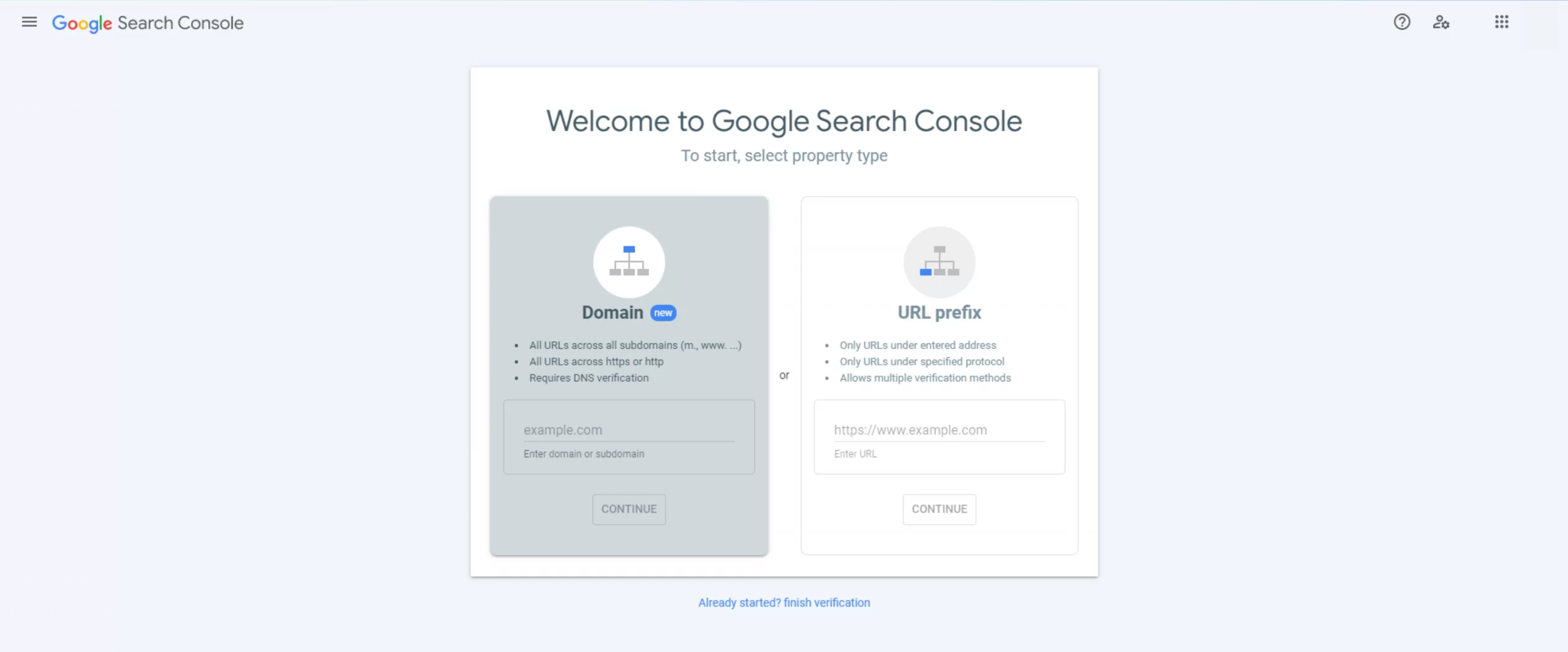
2. Speed up your Shopify store
Website speed is a critical ranking factor, as it directly affects user experience. Websites that load slowly often experience increased bounce rates and decreased conversion rates. To speed up your Shopify store, consider optimizing your images, leveraging browser caching, and minifying CSS and JavaScript files. Additionally, choose a responsive and lightweight theme and regularly monitor your store’s performance using tools like Google PageSpeed Insights.
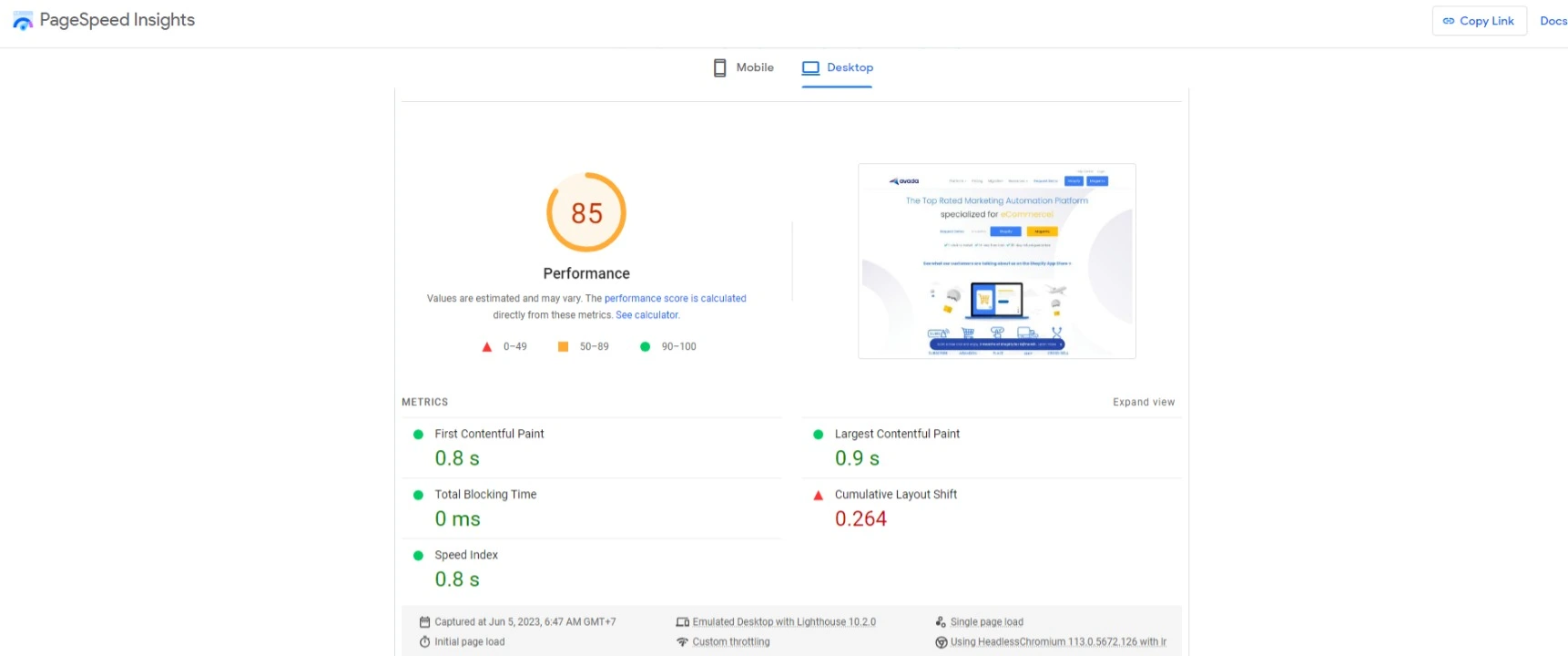
3. Optimize your website structure
An effectively structured website not only enhances user navigation but also assists search engines in comprehending the hierarchy and significance of your pages. Ensure that your main product categories and collections are accessible from the homepage, and use descriptive and keyword-rich URLs for your pages. Implement breadcrumb navigation to provide clear paths for users and search engines to follow.

4. Make your eCommerce store mobile-friendly
With the increasing number of users accessing the internet from mobile devices, having a mobile-friendly website is crucial. In the last quarter of 2019, smartphones were responsible for a whopping 52.6 percent of global website traffic, and the number of mobile users worldwide is expected to grow to 7.41 billion by 2024.
Furthermore, mobile devices are also changing shopping habits. According to Google, 59 percent of shoppers say that being able to shop on their mobile devices is important when deciding which retailer or brand to buy from. Plus, 70 percent of smartphone owners who made a purchase in-store turned to their mobile devices to research the purchase beforehand.
Shopify offers mobile-responsive themes by default, but it’s essential to test your store’s mobile experience across different devices and screen sizes. Optimize your images for mobile, ensure buttons and links are easy to tap, and provide a seamless browsing experience for your mobile visitors.
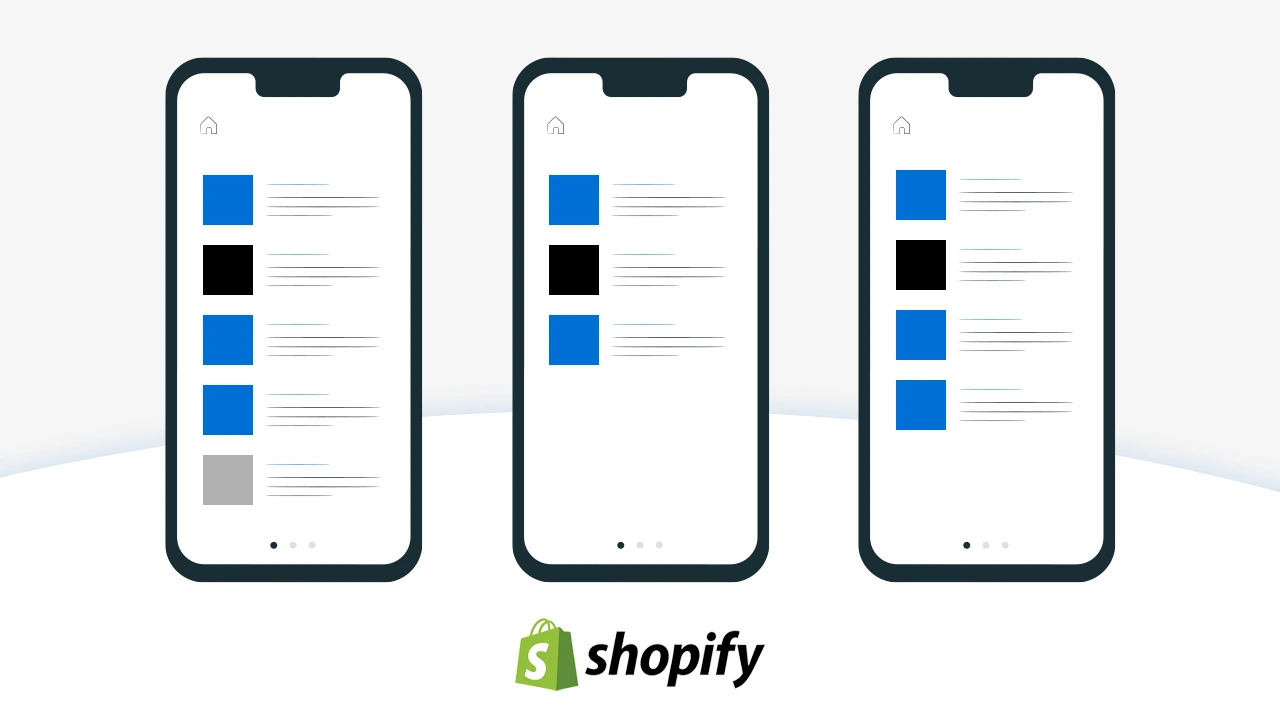
5. Fix duplicate content
Duplicate content can harm your SEO efforts by confusing search engines and diluting the ranking potential of your pages. In Shopify, it’s common to have duplicate content issues due to product variants, tags, and filters. To tackle this, use canonical tags to indicate the preferred version of a page, set up URL redirects, and avoid using boilerplate content across multiple pages.
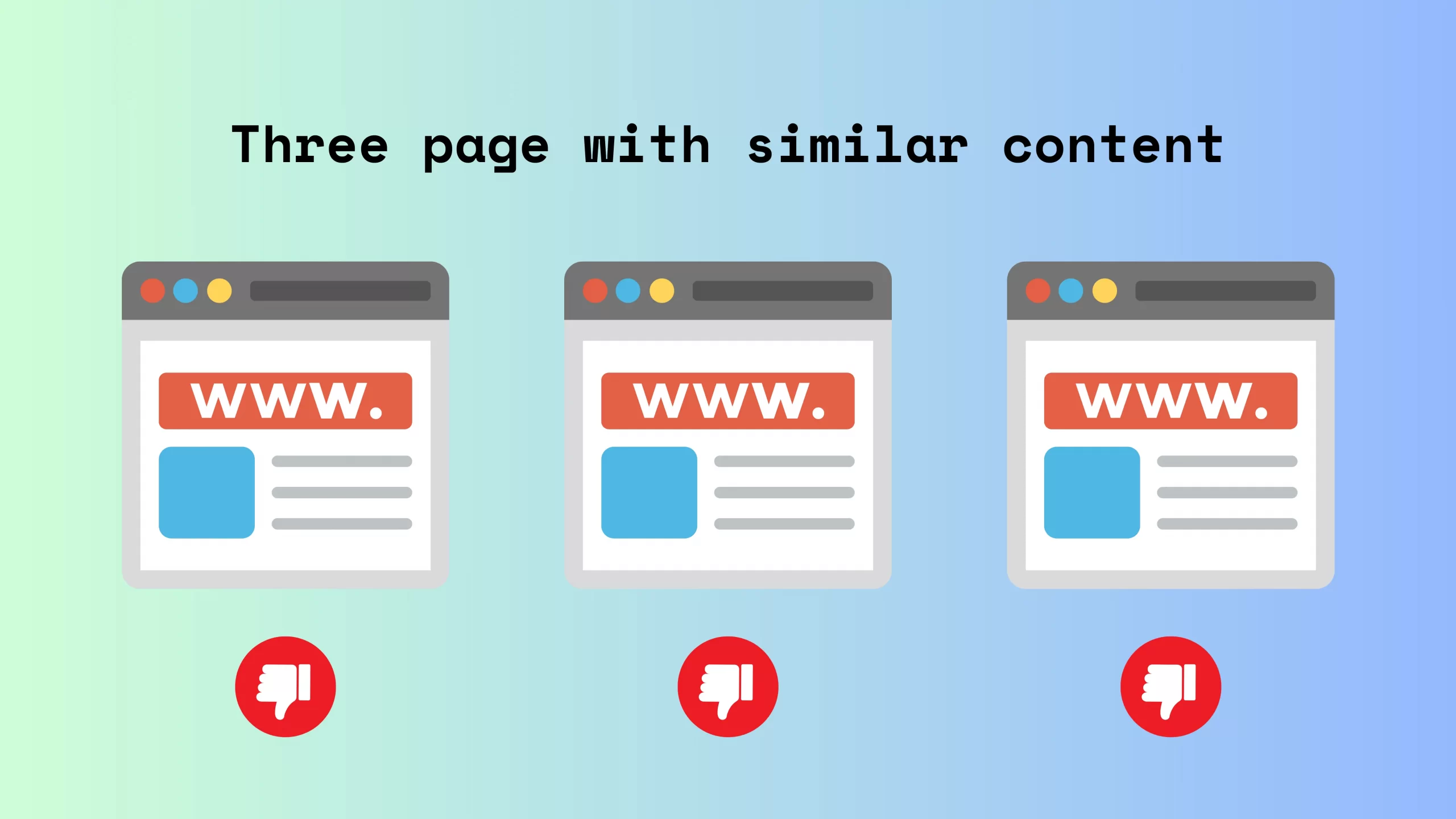
6. Optimize meta tags
Meta tags, including meta titles and meta descriptions, play a crucial role in telling search engines and users what your pages are about. Craft unique and compelling meta tags for each page, incorporating relevant keywords naturally. Ensure that your meta titles are concise and descriptive, while your meta descriptions provide a persuasive summary of the page’s content.
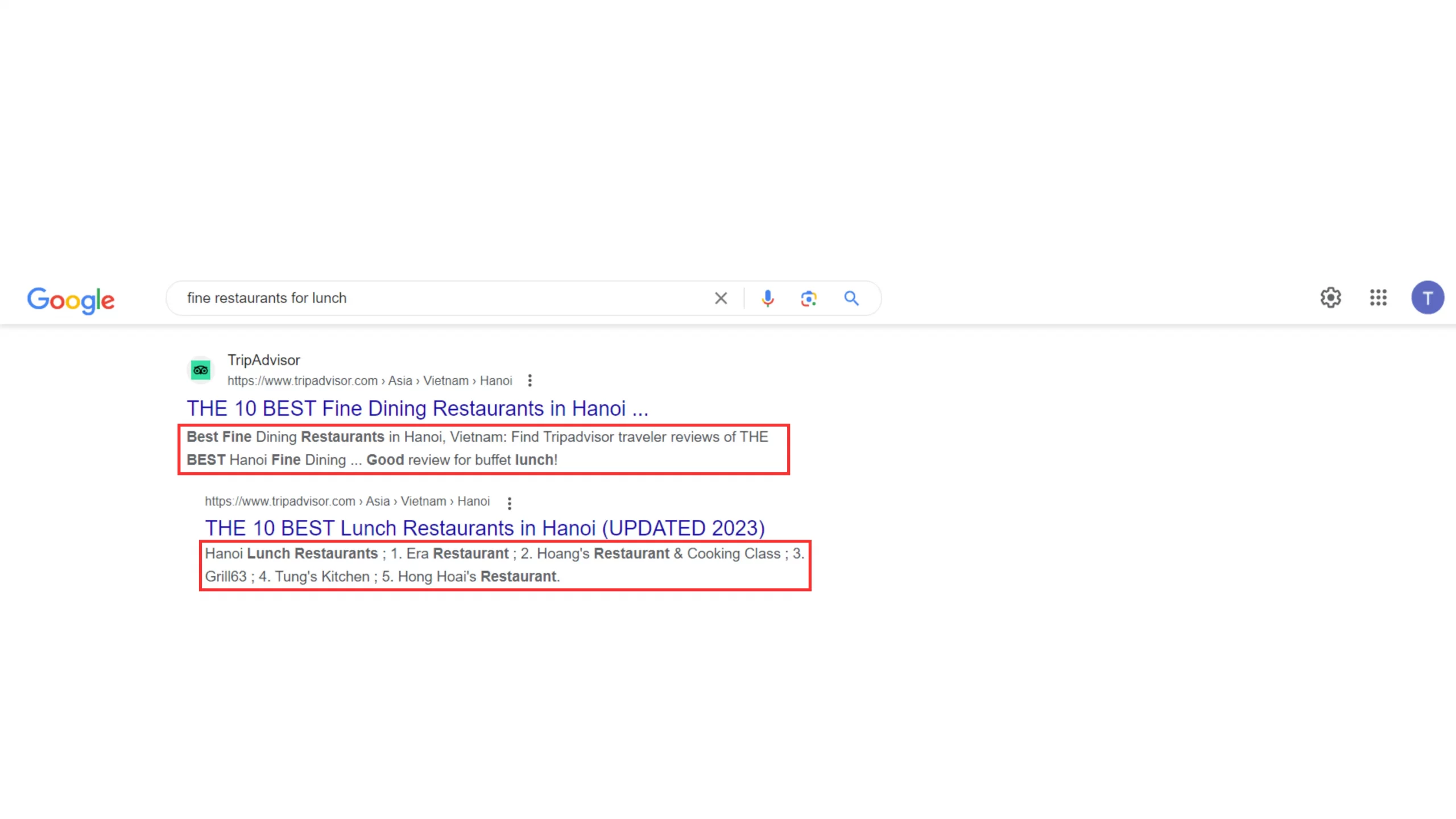
7. Optimize images and alt text
Images are essential elements of an eCommerce store, but they can also impact your website’s performance if not optimized correctly. Compress your images to reduce file size without compromising quality, and use descriptive file names and alt text to provide context for search engines. Alt text is also crucial for accessibility, as it helps visually impaired users understand the content of images using screen readers.
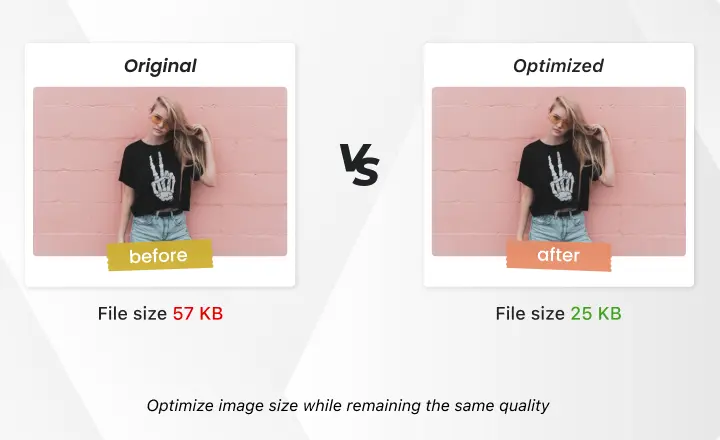
8. Create high-quality content
Content is king in the world of SEO, and it’s no different for your Shopify store. Create informative and engaging product descriptions that highlight your product’s unique features and benefits. Integrate relevant keywords seamlessly into your content, while avoiding excessive keyword repetition or stuffing. In addition to product descriptions, consider creating a blog or resource section where you can publish valuable content related to your industry or niche.

9. Enhance your reach with social shares and guest blogs
Social media can be a powerful tool for driving traffic and improving your store’s visibility. Encourage social sharing by adding social sharing buttons to your product pages and blog posts. Additionally, consider reaching out to influential bloggers or industry experts for guest blogging opportunities. Guest blogging not only helps you expand your reach but also allows you to build backlinks to your store, which can positively impact your search engine rankings.

10. Utilize the best Shopify apps for SEO
Shopify offers a wide range of apps to enhance your SEO efforts. From keyword research tools to SEO analyzers and image optimization plugins, there are various apps available to help you streamline your optimization process. Research and select the best Shopify SEO apps that align with your specific needs and goals.
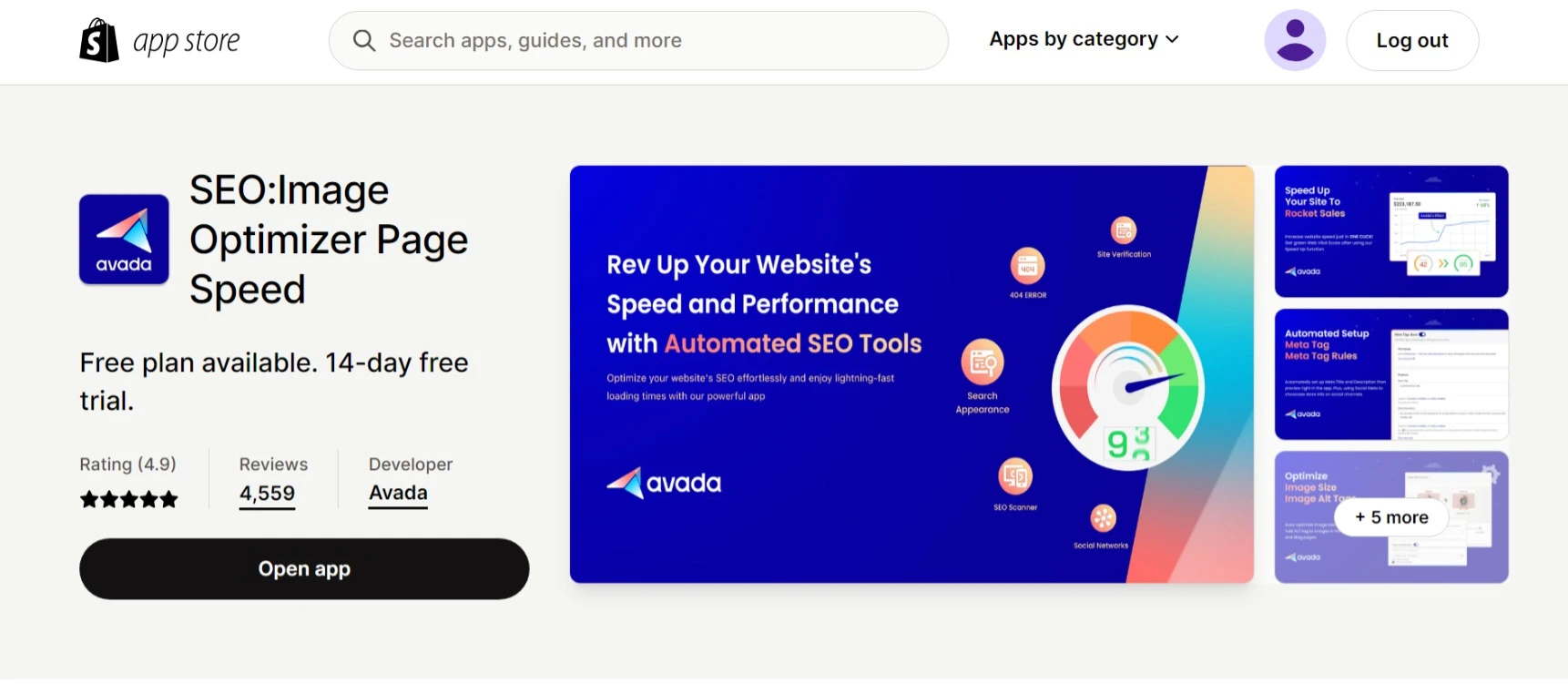
11. Optimize your Shopify store for local SEO
If you have a brick-and-mortar presence or serve customers in specific locations, optimizing your Shopify store for local SEO is crucial. Include your business address, phone number, and operating hours on your website, and create a Google My Business listing. Leverage local business directories and encourage customer reviews to boost your local search visibility. Additionally, consider using local citation software to ensure consistent and accurate business information across various online platforms.
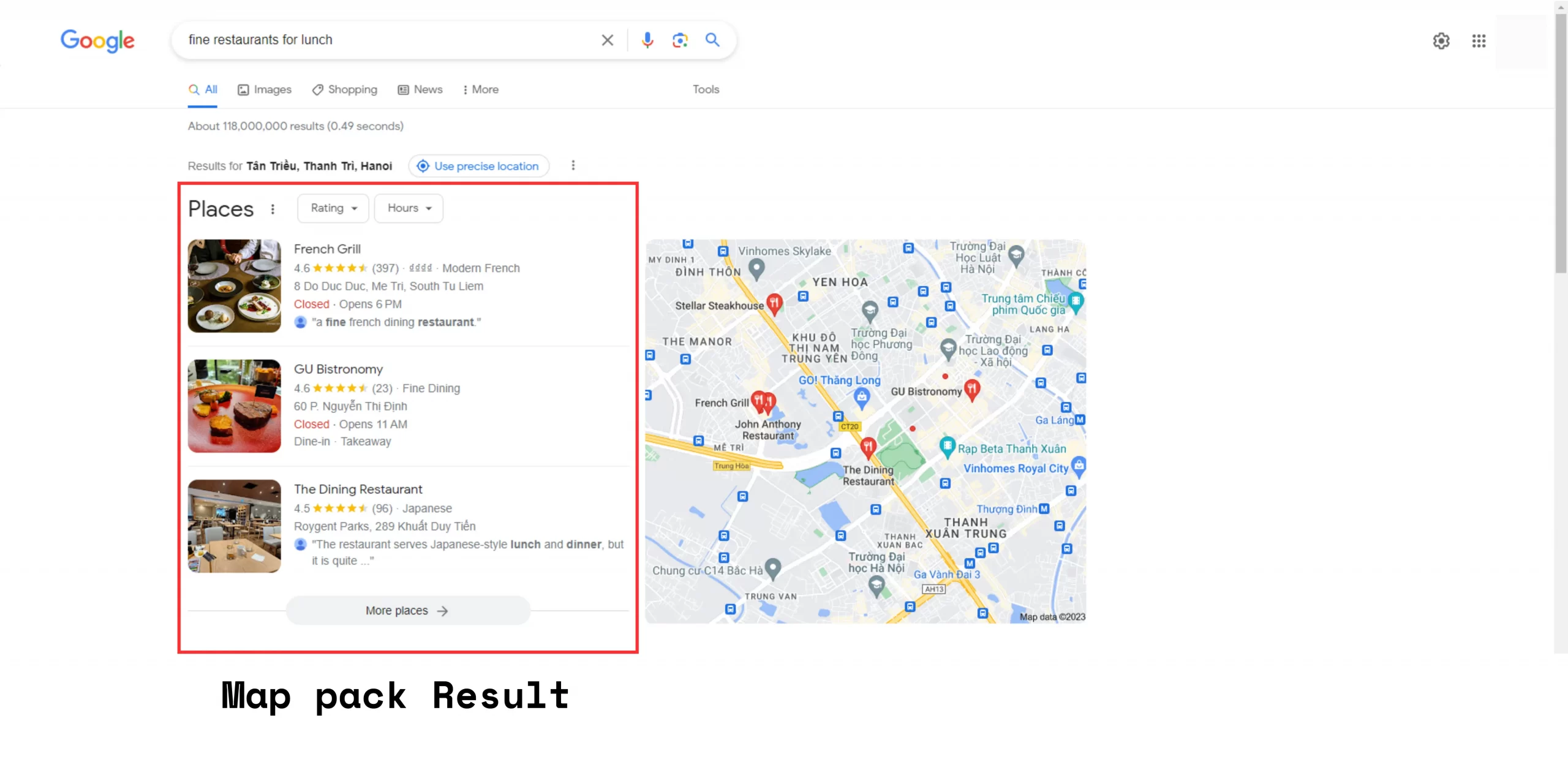
12. Monitoring keyword rankings and organic traffic
To assess the effectiveness of your SEO efforts, it’s essential to monitor your keyword rankings and organic traffic regularly. Use tools like Google Search Console and Google Analytics to track your keyword positions, organic traffic trends, and user behavior on your Shopify store. Analyze the data, identify areas for improvement, and adjust your SEO strategies accordingly.
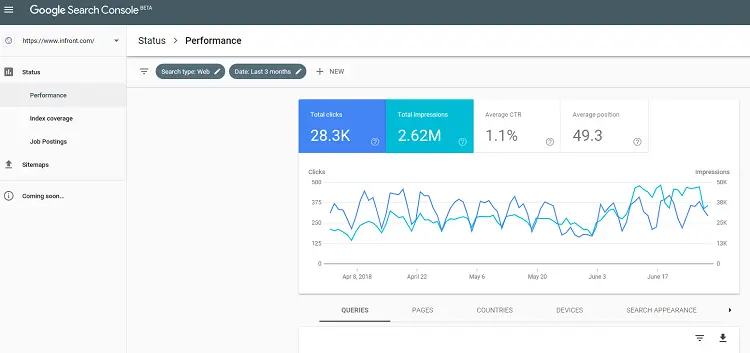
Shopify SEO Guide – Best Practices
Now that you have learned some actionable tips to optimize Shopify SEO, let’s take a moment to discuss some common SEO mistakes to avoid and highlight five best practices to keep in mind.
1. Common SEO mistakes to steer clear of
In the constantly changing world of digital technology, the importance of search engine optimization (SEO) cannot be overstated, as it is key to attracting natural traffic to your site.. As an AI coding expert turned skilled content creator, I understand the significance of optimizing content to make it search Shopify SEO friendly. However, there are some common SEO mistakes that even the most experienced webmasters and content creators often stumble upon. Let’s delve into these pitfalls and discover how to steer clear of them.
Keyword Stuffing: Balancing Relevance and User Experience
Picture this: you stumble upon a webpage that seems to have copied and pasted the same keyword over and over again, rendering the content nearly unreadable. Annoying, right? That’s precisely what happens when you engage in keyword stuffing.
While incorporating relevant keywords is essential for ranking well on search engine result pages (SERPs), it’s vital to maintain a natural flow of language and prioritize user experience. Search engines have become incredibly sophisticated in recognizing excessive keyword usage and can penalize your site for such practices. So, strike a balance between using keywords strategically and creating engaging, informative content that resonates with your audience.
Neglecting Mobile Optimization: Catering to the On-The-Go User

Have you ever landed on a website that displayed poorly on your mobile device, requiring zooming in and out or scrolling endlessly? Frustrating, isn’t it? Neglecting mobile optimization is a grave mistake in today’s smartphone-dominated era. With an increasing number of users accessing the internet through their mobile devices, search engines prioritize mobile-friendly websites in their ranking algorithms.
If your site fails to deliver a seamless experience on smaller screens, you risk high bounce rates, lost conversions, and ultimately, a decline in search visibility. Embrace responsive design and ensure your website looks and functions flawlessly across a range of devices.
Ignoring Metadata: Crafting Precise and Engaging Snippets
While metadata might seem like a technical aspect of SEO, it plays a pivotal role in how your website appears on SERPs. Meta titles and descriptions act as concise summaries of your web pages, giving users and search engines an idea of what to expect. Ignoring metadata means missing out on a golden opportunity to capture the attention of potential visitors.
Craft enticing, keyword-rich meta titles and descriptions that accurately represent your content, compelling users to click through to your website. By doing so, you not only enhance your click-through rates but also provide search engines with valuable information about your pages, improving their relevance and visibility.
Neglecting Image Optimization: Enhancing Performance and User Experience
Visual elements can significantly enhance the appeal and engagement of your website. However, neglecting image optimization can have adverse effects on both user experience and SEO. Large image files can slow down page loading times, frustrating users who expect instant access to information. In the world of SEO, page speed matters—a slow-loading website can harm your rankings.
By resizing and compressing images without compromising quality, you can strike a balance between visual appeal and performance optimization. Additionally, don’t forget to add descriptive alt tags to your images, as they provide valuable information to search engines, especially for users with visual impairments.
Lack of Quality Content: Unleash the Power of Unique and Valuable Information
High-quality content forms the cornerstone of every successful SEO strategy. Thin, shallow, or duplicate content offers little value to users and fails to differentiate your website from the vast sea of competitors. Instead, focus on creating high-quality, unique content that engages and educates your audience. Develop a content strategy that addresses the needs, pain points, and interests of your target audience. Provide in-depth insights, actionable tips, and captivating
2. Five tips for Shopify optimization
Key takeaway
- Keyword research: Use SEO tools to find and integrate audience-specific keywords into your content.
- Product titles: Enhance visibility by using descriptive and keyword-rich product titles.
- Internal linking: Improve navigation and SEO by linking related pages within your store.
- User-generated content: Boost credibility and SEO through customer reviews and testimonials.
- SEO trends: Stay updated with the latest SEO trends and adapt your strategies accordingly.
Conduct keyword research:
Understand what keywords your target audience is using and incorporate them strategically into your content.
The cornerstone of every effective SEO approach is the strategic use of keywords. By understanding the keywords your target audience is searching for, you can tailor your content to match their intent. Start by using keyword research tools like Google Keyword Planner or SEMrush to identify relevant and high-volume keywords. Consider the search volume, competition, and relevance of each keyword to your products or services. Once you have your keywords, seamlessly incorporate them into your product descriptions, blog posts, and other content to improve your search engine rankings.
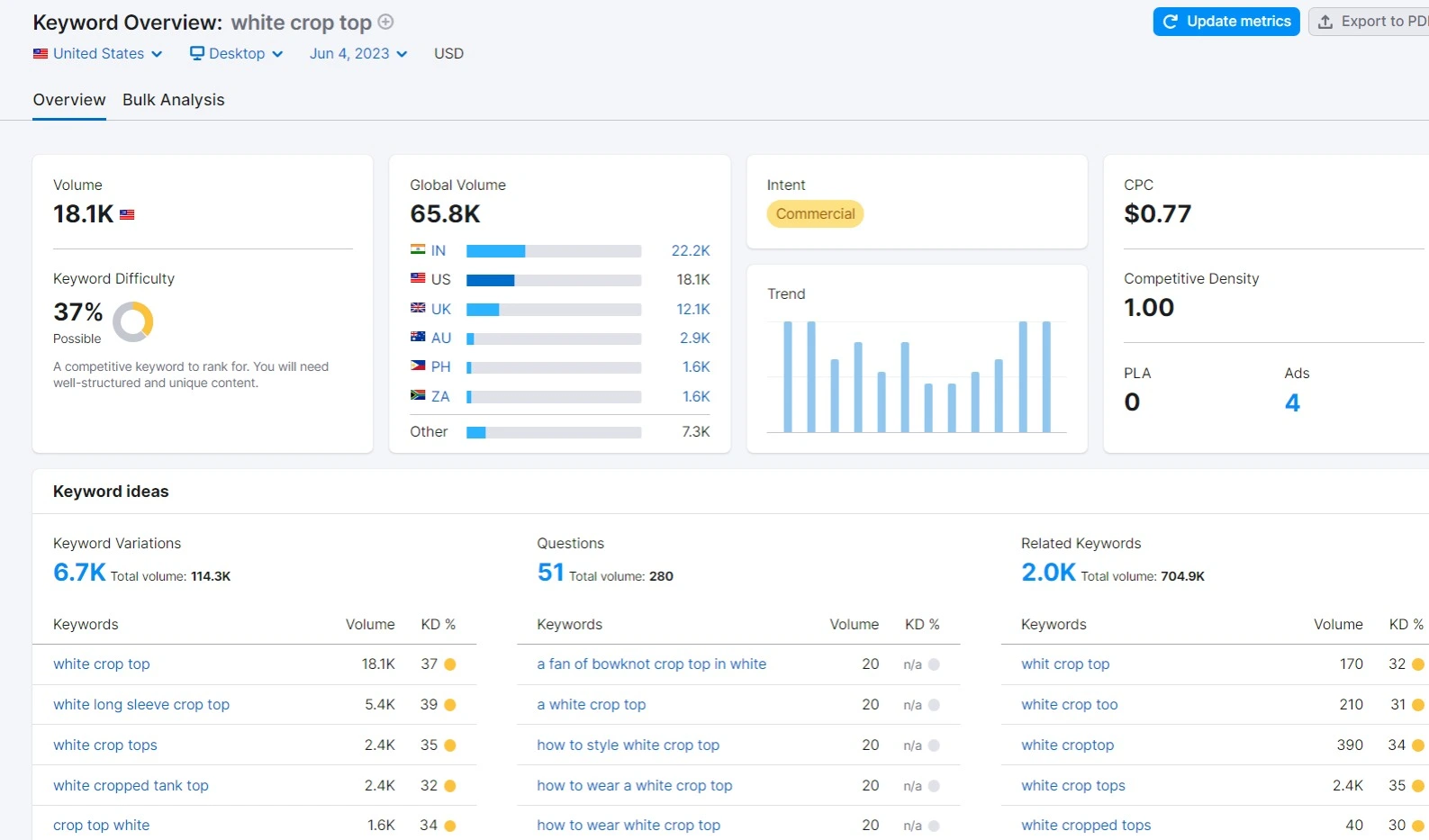
Optimize product titles:
Craft descriptive and keyword-rich titles for your products to improve their visibility in search results.
When potential customers search for products, the first thing they see is the product title in search results. Optimizing your product titles with descriptive and keyword-rich phrases can significantly improve your click-through rates. Ensure that your titles accurately describe your products while incorporating relevant keywords. For example, instead of a generic title like “White crop top” consider using something more specific and compelling like “Premium Cotton crop top Shirt for Girl- Comfortable and Stylish.” This way, you not only include important keywords but also provide valuable information to potential customers.
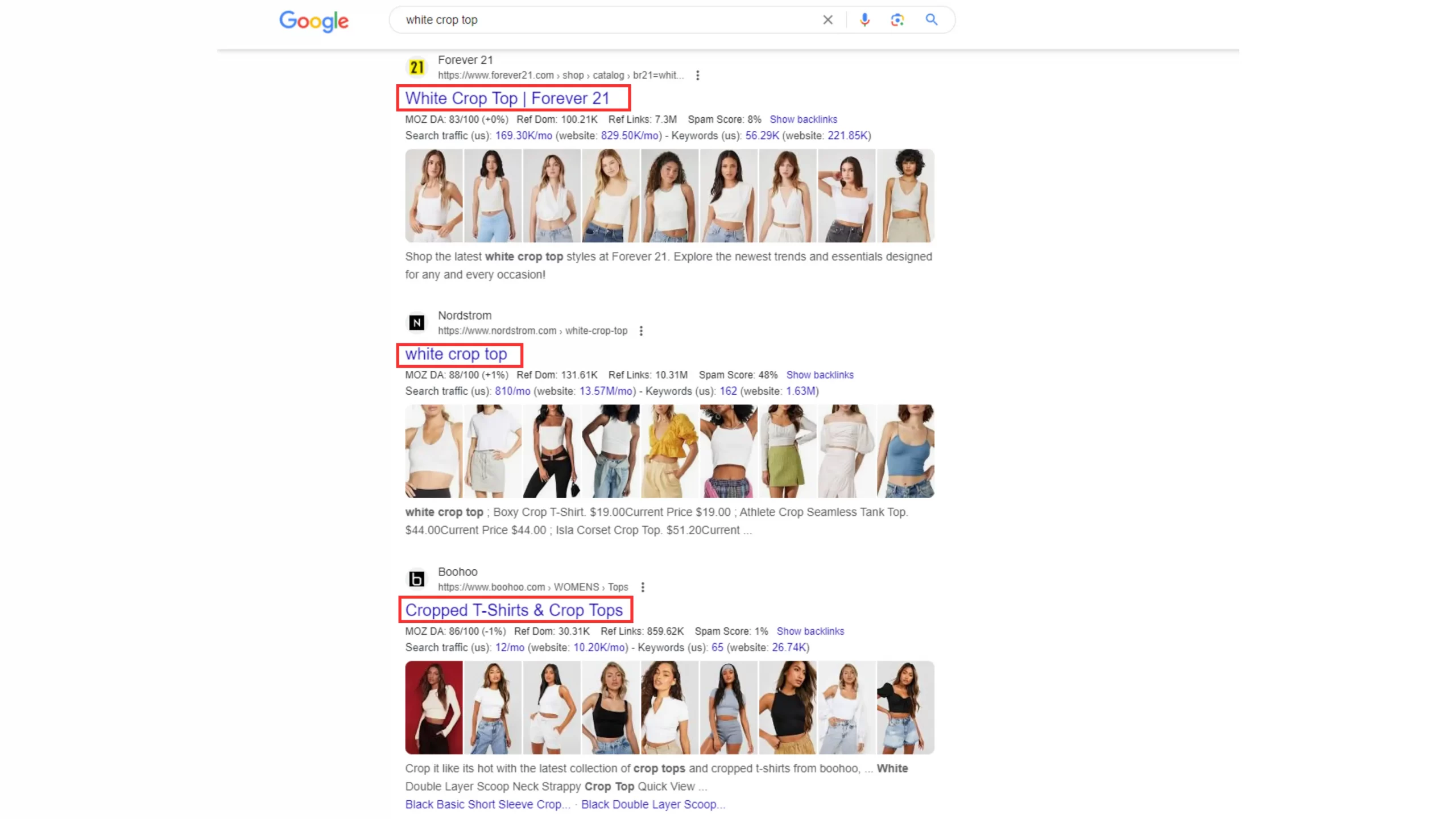
Leverage internal linking:
Link relevant pages within your Shopify store to establish a strong internal linking structure and improve navigation.
Internal linking is the process of creating connections between various pages on your own website. It not only helps search engines understand your site’s structure but also improves the user experience. By linking relevant pages together, you create a logical flow and make it easier for visitors to navigate through your store. For example, if you have a blog post discussing the benefits of a particular product, link that post to the corresponding product page. This way, users can quickly access more information about the product and potentially make a purchase.
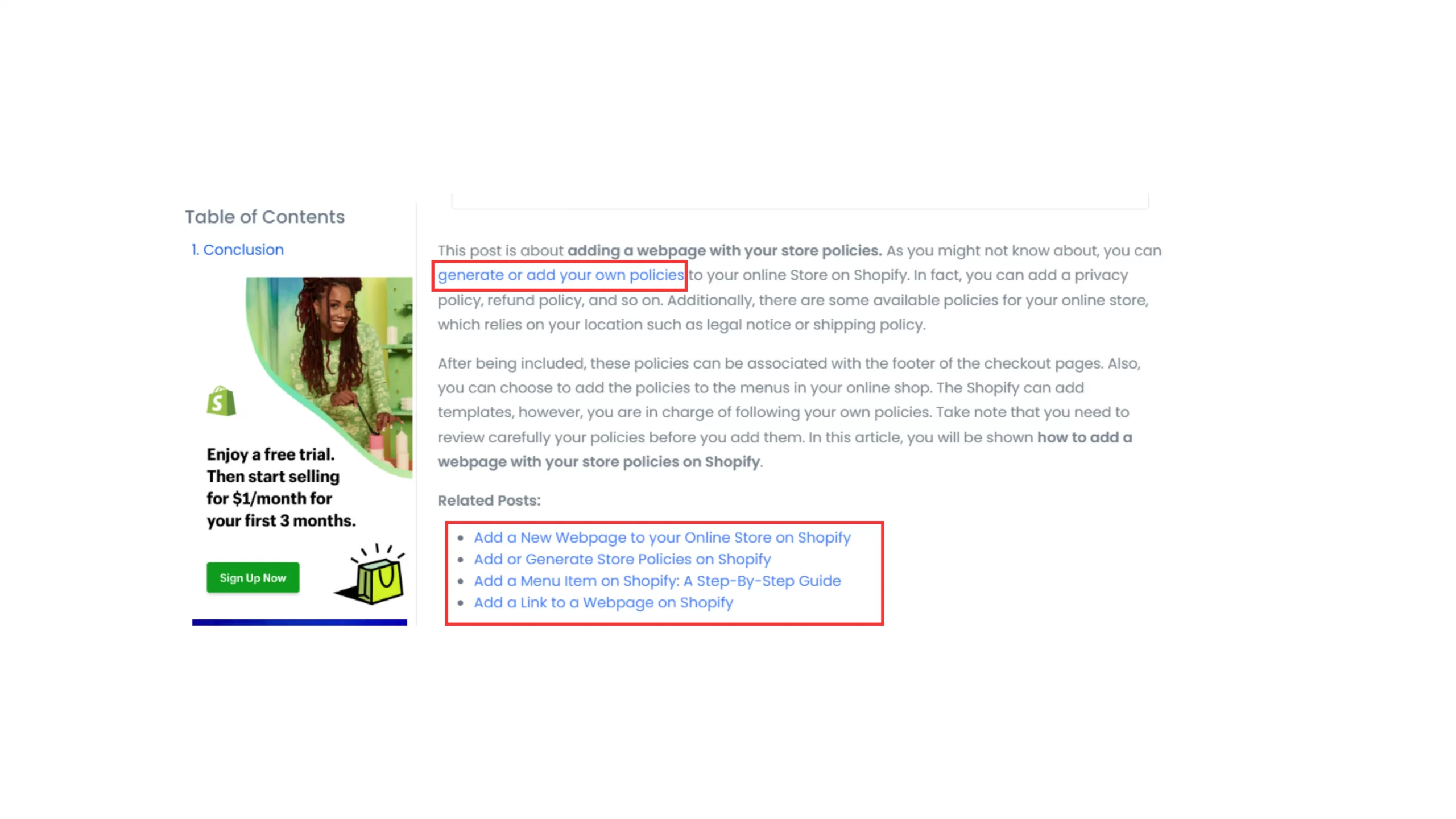
Utilize user-generated content:
Encourage customers to leave reviews and testimonials, as user-generated content can boost credibility and SEO.
User-generated content, such as reviews and testimonials, is a powerful tool for building trust and credibility. Positive reviews not only influence potential customers but also play a significant role in search engine rankings. Search engines value user-generated content because it indicates that your store is active, trustworthy, and provides value to customers. Encourage your customers to leave reviews and testimonials by implementing a review system or offering incentives. Showcase these reviews on your product pages to provide social proof and enhance your SEO efforts.

Stay up to date with SEO trends:
SEO is an ever-evolving field, so it’s essential to stay informed about the latest trends and algorithm updates to adapt your strategies accordingly.
SEO is a dynamic field that constantly evolves with search engine algorithm updates and changing user behaviors. In order to maintain a competitive edge, it’s vital to keep abreast of the most recent developments in SEO. Follow reputable SEO blogs, attend industry conferences, and engage in online communities to learn from experts and gain valuable insights. By keeping up with the latest trends, you can adapt your SEO strategies, optimize your Shopify store accordingly, and maintain a competitive edge in the ever-changing digital landscape.
Shopify SEO Guide – FAQs
[sp_easyaccordion id=”61218″]
Final Thoughts
In conclusion, implementing effective SEO strategies is crucial for maximizing the visibility and success of your Shopify store. By following the tips and best practices outlined in this guide, you can optimize your website structure, improve page rankings, attract more organic traffic, and ultimately drive conversions and sales. Stay proactive, monitor your progress, and adapt your strategies as needed to stay ahead in the competitive eCommerce landscape. Start implementing these SEO techniques today and watch your Shopify store thrive!
Don’t hesitate to join our dynamic Facebook Community and follow our blog for more useful insights about eCommerce!